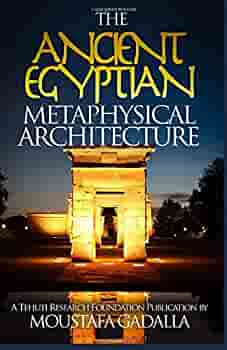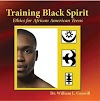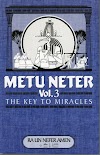This book reveals the Ancient Egyptian knowledge of harmonic proportion, sacred geometry, and number mysticism, as manifested in their texts, temples, tombs, art, hieroglyphs, ...etc., throughout their known history. It shows how the Egyptians designed their buildings to generate cosmic energy, and the mystical application of numbers in Egyptian works. The book explains in detail the harmonic proportion of about 20 Ancient Egyptian buildings throughout their recorded history.This Expanded Edition of the book is divided into three parts containing a total of 13 chapters, as well as 10 appendices being A through I.Part I: Architectural Concepts—Function and From consists of five chapters—1 through 5:Chapter 1: The Architectural Canon Chapter 2: The Metaphysical Structure of The Universe Chapter 3: Visitation Sites of The Lower Heavenly Court Chapter 4: The Sealed Pharaohs' Tombs Chapter 5: Egyptian Temples of The Divine Forces Part II: The Physical Manifestation of Metaphysical Concepts consists of five chapters—6 through 11:Chapter 6: Architectural Constituent Forms of Metaphysical Functions will cover the various architectural forms as manifestation of their corresponding functions [both physically and metaphysically] for "false doors", recessed wall panels, columns and pillars, capitals of columns, porticoes, peristyles, colonnade formations at four different locations, obelisks, statuary images of various roof forms (flat, gable, corbelled, arch & vaulted), stylistic architectural details (architrave, cornice, and torus) and stylistic ornamentation and decoration such as starry ceilings, floral, geometric, figurative, a combination of two or all three, guilloche (misnamed as the Tuscan border), chevron, and scroll pattern.Chapter 7: The Primary Geometrical Shapes/Forms Chapter 8: The Generative Square Root Rectangles—"Irrational numbers" Chapter 9: The Arithmetic Generative Progression Chapter 10: Combined—Arithmetic and Graphic Harmonic Design of Egyptian Buildings.Chapter 11: Harmonic Analysis of Ancient Egyptian Works will cover several examples in Ancient Egypt from all eras and throughout Egypt that show the Egyptian applications of the design elements discussed in this book. Examples include temples, tombs, pyramids, shrines, capitals of columns, stelae, pylons and doorways.Part III: The Spirited Communications has two chapters—12 and 13:Chapter 12: The Animated Metaphysical Images on Walls will cover the metaphysical significance of walls' decoration as well as explanations of various depictions.Chapter 13: Human Activities will cover the roles of humans in activating, maintaining, participating in various rituals and festivities as well as deactivating the powers of the temple when temples and the whole Egypt is under siege.Appendices has ten appendices—A through J:Appendix A: General Plans of Sample Egyptian Temples covers layout plans of several Egyptian temples with a short description of each.Appendix B: Practical Mathematics in Ancient Egypt Appendix C: Fraction Mysticism Appendix D: Intentional "Irregularities" In Egyptian Works Appendix E: Monument Appropriations Reconsidered covers clarification of what appears to be monument appropriation by one pharaoh of another.Appendix F: Sample Egyptian Sculpture Works covers a very short list of recognizable Egyptian sculptures.Appendix G: Concrete Blocks Various Types covers the advanced Egyptian knowledge of concrete mixes and application examples of such knowledge throughout Ancient Egypt.Appendix H: The Masonic Egyptian Roots covers the Egyptian roots of the widespread secret fraternal called ‘Free and Accepted Masons’ (popularly known as Freemasonry).Appendix I: Egyptian Influence on Modern Architecture covers several examples worldwide of such influence.Appendix J: Types and Forms of Mortals' Buildings














0 Comments